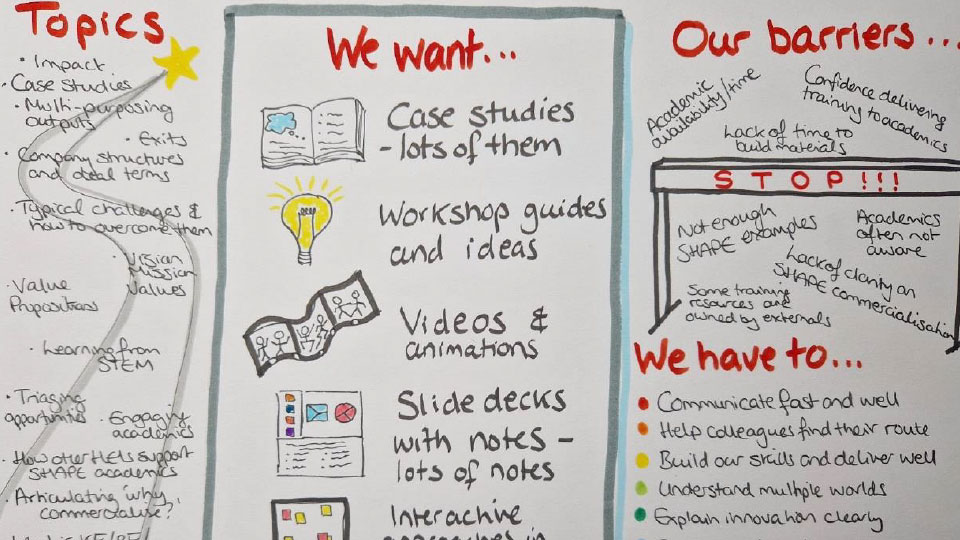What’s your background and what was your motivation for getting involved in the Methods for Change project?
I’m a cultural and social geographer interested in questions around representation, senses of place, difference and lived experience. Before joining the Methods for Change team, I was a Lecturer in Human Geography at the University of Manchester where I was involved in teaching undergraduate and postgraduate students. Alongside Methods for Change, I’m working on an ESRC N8 funded project exploring the lived heritage of Manchester’s gay village.
I’ve always been keen to ensure my research is not only academically insightful, but that it can speak to the complex and changing challenges that face the twenty first century. My PhD research took place against the backdrop of the ageing and urbanising of the world’s population. One aim was to more generously represent the lived experiences of older people in the move to creating age-friendly cities.
I have a long-standing interest in methodology. Whilst researching, I have begun to think about how methods are not prescriptive tools for accessing information but are perhaps better treated as techniques which can be sensitively and reactively deployed depending upon how the research unfolds. I am keen to enter discussions with other academics to see how they understand method and to communicate experimental approaches to non-academic audiences in a way which I hope can be of use to them.
What do you think social science methodologies can bring to non-academic sectors?
One of the exciting things about social science methodologies is the scope for creativity. Research need not be confined to ‘off the peg’ methods such as surveys, interviews and focus groups which, by and large, have become the bread and butter of engagement in non-academic sectors. Of course, these ‘traditional’ methods have great value, but the way they are used can be limiting.
The social sciences also hone our ability to creatively record and analyse data. For example, in my research with older people, I was attuned as much to the tone of voice, gestures and body language of participants as I was to what was being shared. Sometimes, what is not said, or the moments when words fall short can reveal far more than the words alone. It is just as important, methodologically, to think about how we record and make sense of this material. I hope that social science methodologies might help non-academic sectors to move away from wanting to find objectively ‘right’ or ‘wrong’ answers and encourage an attunement to understanding the complexity and messiness of life.
I also think the social sciences have the potential to be political and to really challenge society. They probe, question and challenge the status quo. This is a kind of impact is often overlooked and I think the social sciences have a lot to offer the likes of social movements and charities that are working to advance various important causes.
Why are they not currently having the impact that they should?
Social science is often perceived as being messy, subjective and critical as opposed other disciplines which might be seen as objective, value free and neutral (though this is debatable!). I also think much of the social sciences are seen as working on the scale of everyday life that does not lend itself to knowledge that can be easily generalisable, marketed or rolled out en masse.
But most of life does not take place in a lab. Clean hard ‘facts’ stand in opposition to the felt, emotional and embodied ways that life is lived. Though social science methodologies often require more in-depth and detailed engagement, there is a need to work with the messiness of the world. Any attempt to distill some sort of ‘essence’ from the world or to apply a one size fits all approach invariably misses out on that which the social sciences are so good at attending to.
How will the Methods for Change initiative make a difference in this area?
Methods for Change is about bringing together academics and non-academics under one roof. By doing this, we will be able to see the overlaps and synergies between different areas of work and build relationships and connections which can go on to create partnerships with different organisations in the future.
Methods for Change provides a platform to think through some really interesting theoretical questions too. How do different academics and non-academics understand what constitutes a method and a methodology? What is change? At what point in researching does change happen? When is change usually expected to occur, where does this expectation come from and what are its effects on how different research is valued within and beyond academia?
Through this project, we can show different ways of understanding change, method and methodology. Discussions can be opened between different stakeholders, organisations and individuals about how these terms are understood. We can see where more work is needed, where work tends to concentrate and identify different sectors and organisations where perhaps more attention and collaboration is needed.
What types of research methods do you use in your own work?
I draw on a suite of arts-based, ethnographic methods including photo-walks, video, collaging, photography, object elicitation and go-alongs. Photography and walking were drawn upon the most whilst researching with older people because I was interested in understanding the world from their perspective. Participants were asked to ‘take me to places of significance’ and the instruction was left deliberately open. The object of the camera almost functioned as a reminder for participants to focus on the landscapes we were moving through. Sometimes participants took the photographs, sometimes I took the photos under their instruction. It was the practice of photography that was important, not the quality of the photographs themselves. Walking was used to get at thoughts as they were emerging rather than thoughts which had been premeditated or reasoned beforehand as might be the case in a more conventional interview. This approach drew attention to those aspects of life which are often overlooked, including memories, nostalgias and rhythms. The whole process was led by the participants.
The photographs created by participants whilst walking around places of significance and their accompanying narratives were used to collaboratively assemble a photo and story collection which was shared at different venues across Greater Manchester. The collection aimed to open conversations about what ‘older age’ means and to give something back to the communities who I had spent time with. I have authored an academic paper which demonstrates how this approach might work in practice and two blogs.
How will being part of the Aspect network support the work you’re planning to undertake?
Using Methods for Change as a springboard, I am interested in sharing the value of arts-based approaches to different organisations working with older people including Greater Manchester Combined Authority (GMCA), The Centre for Ageing Better, The International Longevity Centre and Age UK. Both the findings and methodological insights from this work could be of use to a range of different organisations who create policies geared toward older people, and other under-represented social groups. In particular, the arts-based methods I have used could offer a more exciting and insightful way of engaging with different individuals whilst also encouraging us to stop confining complex individuals to what are often very totalising categories.
Find out more about Methods for Change.
Photo credit: B_Me via PixaBay




